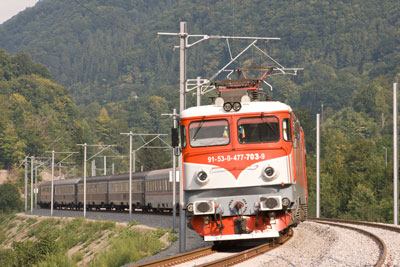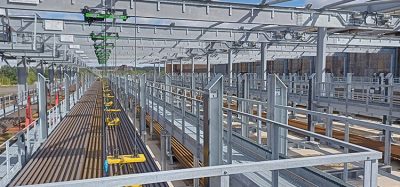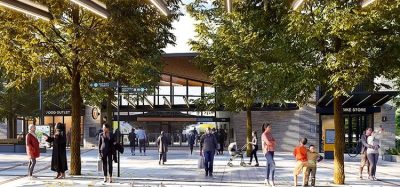Romania’s planned railway closure – not the way forward
Posted: 24 September 2015 | | 1 comment
The Romanian General Transport Master Plan (GTMP) poses a number of threats to national passenger rail services and puts into question the EU White Paper’s mobility objectives, writes the UITP’s Artur Perchel and Mihai Bărcănescu.
The looming closure of up to 40% of the Romanian railway infrastructure as outlined in the document has been a growing concern for the whole European public transport community.
How it all got started


Source: Club Feroviar
The whole process formally started in 2012, when the Romanian government proposed the General Transport Master Plan (GTMP) in order to outline the national transport strategy and major transport and infrastructure investment priorities until 2030. One of the main objectives behind this document has been to prepare the necessary legal background for accessing the 2014–2020 Structural Funds (including the Large Infrastructure Operational Programme, LIOP). The finalised Master Plan, commissioned to the U.S. consulting company AECOM International (with the support of JASPERS), was sent in early-2015 to the European Commission (DG REGIO and DG MOVE) for review. Yet the Commission put its agreement on hold requesting the Romanian government to revise certain sections of the document. Finally, in July 2015, the Commission adopted the 2014–2020 LIOP for Romania and accepted a part of the funds foreseen for the GTMP.
One has to admit that the Master Plan makes a significant effort to allocate up to €14 billion to rail infrastructure investments – mostly the rehabilitation and upgrading of around 4,000km of railway lines. Also, the document acknowledges the significant railway deterioration in Romania, referring to the obsolete infrastructure, ageing rolling stock, ineffective operations and dropping ridership. The causes, however, such as mismanagement or underfinancing are admitted only to a very limited extent, not to mention the issue of widespread corruption1. Likewise, the main idea about how to bring Romanian railways on course again as proposed in the GTMP is relatively ambiguous and questionable. Why?
Line-cutting logic and beyond
According to the GTMP, the main remedy to optimise efficiency, reduce operational costs and generate the necessary investment capital is to ‘focus on the sustainability of (railway) infrastructure’, which roughly represents only about 60% of all existing routes, mainly the main lines. This, in turn, means that the remaining 40%, mainly local and regional lines could be simply shut down, or at best transferred to private investors or local authorities. In this context, it could be worth asking whether there were any public consultations with private railway operators or political or legal measures taken by the government regarding the transfer of resources to local authorities, including financing PSO contracts on secondary routes and commuter lines. Unfortunately, for the time being this has not been the case.
That given, it is worth bearing in mind that in the European Commission’s 2011 White Paper on Transport, as well as in the climate targets under the EU Climate & Energy Package, rail has been recognised among the main solutions behind achieving ambitious goals for more sustainable, clean and energy-efficient mobility in Europe. Moreover, given its significant economic and job-creation potential the railway sector will play a substantial role in meeting the objectives of the Junker Jobs & Growth Package, the €315 billion strong European Fund for Strategic Investments.
Yet, in the case of the GTMP, it is difficult to find clear, credible and long-term socio-economic, cost-benefit or technical analyses explaining which lines will be shut down and why. Moreover, a number of Romanian railway stakeholders have proven that around 30% of the ‘main network’ ridership comes from the ‘secondary network’, which additionally services several economically-vital industrial facilities2, while preventing the socio-economic exclusion of remote areas and populations. Moreover, the measures taken by the Romanian government go against the grain of a long-term EU transport policy and vision, with the electrification of mobility – envisaging an increased share of rail passenger services with their significantly lower environmental impact – at its cornerstone. From the railway perspective, even the existing Romanian legislation such as the National Sustainable Development Strategy Romania 2013–2020–2030 or Romania’s National Strategy on Climate Change 2013–2020 seem to remain a (nearly) dead letter.
Commission to the rescue?
It is true that some other countries in the Central and Eastern Europe (CEE) region are experiencing a similar set of challenges stemming from chronic under-financing, mismanagement and lack of maintenance. It is also beyond question that many CEE governments strongly favour road infrastructure investments above rail, although this trend seems to be recently changing in favour of railways3. Yet, the Romanian case is steadily rising to become a real cautionary showcase and as such could be critical for DG MOVE and regional governments in determining the nature of their support towards railways. Particularly when the EU is planning to invest around €20 billon in railway network upgrades in the CEE region between 2014 and 20204, including €2 billion for Romania alone.
Therefore, the public transport community has welcomed initiatives taken by numerous political representatives at the European Parliament level and by the Commission that question the government’s current line of reasoning. During this year’s July meeting with the Romanian Transport Minister Ioan Rus, who had since resigned, Transport Commissioner Violeta Bulc stated that the government should be aiming to develop railways’ full potential given its strategic place in the whole EU transport policy. Ms. Bulc also said that any line closure should be carried out only after all other possibilities have been exhausted. This statement is truly important in the light of the fact that trips made on European regional, suburban and urban railway lines represent no less than 89% of the total number of rail passengers and 50% of total passenger kilometres5.
Central and Eastern Europe has the potential
Without any doubt, the rail sector in Romania faces a number of key challenges and requires prompt and thorough reform, yet one that is built on thought-through action with meaningful and well-managed financial resources at its disposal. There is a plethora of good case studies across the region showing that getting rail back on track again is actually possible – the intensifying inter-city competition in the Czech Republic, booming agglomeration railways in Poland, Hungary’s ambitious €3 billion rail investment plan for 2020, growing passenger numbers of Estonia’s Elron…you name it. A country with such demand for mobility and whose railway has such potential may not get a second chance, particularly when the EU funds under the Cohesion Policy will ultimately start to drain after 2020.
References
- European Parliament, ‘Romania’s General Transport Master Plan and Rail System: In-depth Analysis’, Brussels 2015 – europarl.europa.eu/thinktank
- Asociatia Transportatorilor Feroviari din Romania, ‘Observations and Proposals Master Plan October 2014’, 18.10.2014
- Barow, ‘OECD rail investment rising as overall transport spending falls’, International Railway Journal, 20.07.2015
- Ilie, ‘People expect more comfort, more options and more services. Interview with Henri Poupart-Lafarge’, RailwayPRO, July 2015
- ERRAC/UITP, ‘Suburban and Regional Railways Landscape in Europe’, Brussels 2015 (to be published).
Biography


Artur Perchel
Artur Perchel is managing all of UITP’s operations and activities in Central Eastern European countries and in Israel. Before joining the organisation at the end of 2012, Artur gained public affairs and corporate experience from London-based research consultancy ComRes and Brussels-based trade association AmCham Belgium. Earlier, Artur worked as a PhD Researcher at Ghent University.


Mihai-Barcanescu
Mihai Bărcănescu has been working in the UITP since 2012 as a Project Manager, where he coordinates EU-funded projects in the field of rail transport and transport security. He majored in European Politics from Bucharest University and the ULB. Mihai has acquired transport-related experience during his previous roles with UNIFE and Kellen Europe.








Romania’s rail sector is certainly in trouble, figures in the EU pocketbook clearly show this.
However, every country and every region must first of all consider what is the long term potential for rail? What kind of rail system should there be in 10, 20 or 30 years? How should we get there?
Just keeping a run-down and expensive network with expensive services is unacceptable. After the implementation of EU Reg. 1370/2007 Hungary discovered that the cost per passenger-km by rail was 15 times the bus cost! The situation in Romania is probably similar. Certainly, branch lines feed the main line network. But better and cheaper bus feeder services linked to main line trains can be provided with through ticketing such as Resplus in Sweden and City-Ticket in Germany. Rail is not always the best solution…
We must also remember the technical aspects. In general double track has four times the capacity of a single line, not twice. Several EU MS have drastically reduced their rail network (and staff) but increased traffic. This must be demanded from all MS, if the EU and national governments give money to the rail sector, improvements must be demanded in return!
I have during my previous work at VTI Transport Research in Sweden worked extensively with these matters (including projects led by UITP). I would be happy to provide more information and assist Romania in their efforts!
Bertil Hylén, Solna, Sweden
[email protected]